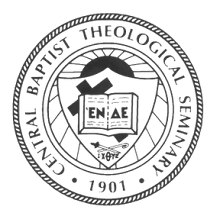Everybody is here now as the create cohort arrived Thursday afternoon from Bangkok. It is wonderful to see them as they meet the
Doctor of Ministry students and turn eagerly to new vistas in Myanmar.
As the hot overhead
sun turned to cooler, lingering hues, the Central pilgrims visited Buddhism’s
holiest site in the land, the Shwedagon Pagoda.
Although I have visited it on many occasions, I go with the students and
faculty colleagues because I want to observe how they attend this radically
other sacred space and religious practice.
I also want ever to cultivate the disposition of a learner.
Neither
shoes nor socks can be worn anywhere in the shrine, so one begins this
encounter with tender feet and a certain vulnerability. Our able guide led us
through milling crowds, many of whom had come to make a drink offering (at the
site that commemorates their birth-day), offer flowers, sit in meditation as a
monk intones sacred texts, or simply reflect on the life of Gautama the Buddha,
the one who had received enlightenment.
I had a
conversation with one of my fellow learners struggling to grasp the essential
core of this long tradition, which derives from Hinduism in north India. He was
respectful, asked thoughtful questions, but was frankly puzzled about all he
was trying to engage. I reminded him
that they do not see the Buddha in the same way that Christians view Jesus
Christ. There had been several who
carried the title Buddha prior to Gautama, and Buddhists make no claim that he
is the Word made flesh, which would be a foreign concept.
There are
thirty-five protocols to follow when portraying the Buddha, such as feet with
no arches, long ears from the weight of hearing wisdom, rounded finger tips,
and ultimately an androgynous appearance.
The goal of these protocols is to make this figure unlike ordinary
humans, a distinct difference from Christianity’s emphasis on Jesus as truly
one of us.
The
Christian belief that God took on human form in Jesus Christ is a distinguishing
characteristic of our faith; further, Christians claim that God reveals the
divine self as Source, Son, and Spirit, Triune in identity and function. The Trinitarian life of God shares a history
with humanity and reveals redemptive intent for the whole creation, another
distinction.
It is clear
that we sharpen our understanding of our own faith as it is juxtaposed to that
of others. As I write early Friday
morning, my iPhone chimes to tell me that the Jewish Feast of Purim begins
tonight. My own faith as a Christian is
rooted in this earlier tradition of Jewish forebears and could not exist
without retaining this heritage. Christianity and Buddhism come from very
different sources and can gain from respectful exchange.
Molly T. Marshall
Central prepares women and men for seeking God, shaping church,and serving humanity.



No comments:
Post a Comment